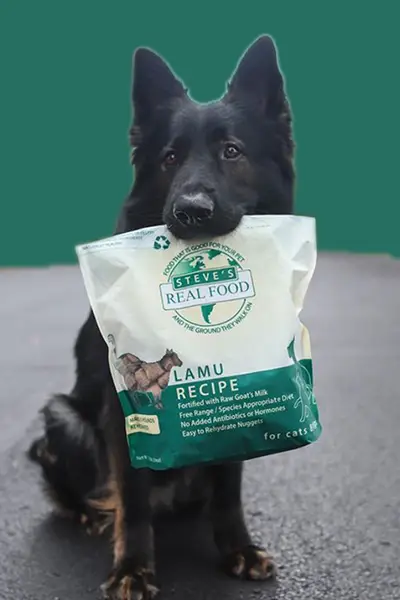Episode 11 – Let Me See That Smile!
Raw-fed dogs and cats tend to have healthier teeth and gums. I know, I know, we were all told for so long that the best way to clean our pet’s teeth was by feeding them a dry, crunchy food. But consider this: after you eat dry, crunchy pretzels, how do your teeth feel? You have bits of pretzel stuck in and around your teeth, right? It’s definitely not a clean, just-brushed feeling. Now think about eating a crisp raw apple. It leaves your teeth squeaky and mostly free of particles of leftover food. The same thought process can be applied to our pet’s food.
A dry, crunchy kibble isn’t effective in cleaning teeth, but here’s why raw food is: moisture (wet food doesn’t tend to stick to wet surfaces) and enzymes. Enzymes are catalysts for processes in the body such as digestion and breaking down of nutrients. They are found naturally-occurring in the body but are also found in high amounts in raw food. Enzymes happen to especially good at breaking down the biofilm that bacteria create as a protective barrier on teeth. That slimy biofilm is tough to get rid of, and even proper brushing cannot break it down effectively. Enzymes help destroy the biofilm, effectively “brushing” the teeth and removing that pesky bacteria that cause tooth decay and bad breath. And, as a nice plus, the boost in immune support that raw food provides will help ward off oral infections and promote healthy saliva, with an appropriate balance of bacteria strains.
Ok, so now we know that raw food will help your pet’s oral health, but will any ol’ type of raw food do? A regular raw food diet will absolutely provide benefits, but the most effective way to reap the dental benefits is to incorporate raw bones into your pet’s diet. Raw bones are soft and fun for your pet to chew, and they have marrow, muscle/tendon meat, and cartilage (great for joint health). The raw enzymes do their job breaking down the biofilm and plaque, and the chewing and scraping motion will help whisk all the bad stuff away. Interestingly, cats won’t often chew on a marrow bone in the wild, but they do enjoy crunching on a poultry bone, especially the smaller pieces that are easy to swallow. And, your dog will especially love the raw bones because it helps fulfill a psychological need to chew (especially puppies)!
So where’s a good place to start? Try to incorporate 2-3 raw bones per week into your pet’s diet. Make sure to choose a bone size appropriate for your pet (ie: big dogs should only have big bones—larger than around 4 inches). Feed the bones either outside, or indoors on an old towel or in the kitchen or even in the bathtub, where any mess can be cleaned up easily. And always monitor your pet, as you would with any chew toy or treat. Your pet will be smiling in no time!
Note: We are only talking about raw bones here. Raw bones are soft and full of moisture and have a different structure than cooked bones. Cooked bones are brittle, break apart in sharp pieces, and are not easy for pets to digest. Please make sure that all bones you feed your pet are raw!
Previous Episode 10 – Energy || Go To Episode 12 – Goat Milk
 Beef
Beef Chicken
Chicken Whitefish
Whitefish Pork
Pork Lamb
Lamb Turkey
Turkey Turducken
Turducken All Protein
All Protein Beef
Beef Chicken
Chicken Whitefish
Whitefish Pork
Pork Lamb
Lamb Turkey
Turkey Duck
Duck All Products
All Products Frozen Raw Pet Food
Frozen Raw Pet Food
 Freeze Dried Raw Pet Food
Freeze Dried Raw Pet Food
 Frozen Prey Diet
Frozen Prey Diet
 Freeze Dried Protein Bites
Freeze Dried Protein Bites
 Frozen Quest
Frozen Quest
 Freeze Dried Quest
Freeze Dried Quest
 Eggs over Easy
Eggs over Easy
 Steve's Swag
Steve's Swag 


















